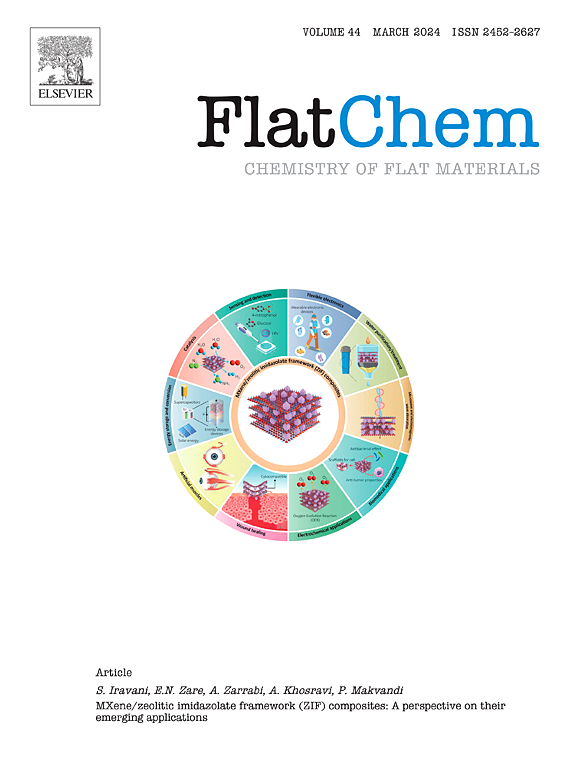Development of bio-graphite from waste coffee grounds via catalytic graphitization for sustainable Lithium ion batteries anodes
IF 6.2
3区 材料科学
Q2 CHEMISTRY, PHYSICAL
引用次数: 0
Abstract
This study presents a sustainable approach to synthesizing carbon-based anode materials for lithium-ion batteries (LIBs) using waste coffee grounds. Two types of carbon were prepared: disordered hard carbon (C-HC) via direct carbonization, and highly crystalline graphite-like carbon (C-AG) through iron-catalyzed graphitization at 1500 °C. Structural analysis using X-ray diffraction (XRD) and Raman spectroscopy confirmed the successful transformation from disordered to graphitic carbon. The interlayer spacing decreased from 3.52 Å (C-HC) to 3.36 Å (C-AG), and the ID/IG ratio dropped from 1.20 to 0.05, indicating enhanced crystallinity and reduced defect density. C-AG exhibited a high reversible capacity of 286 mAh g−1 and an initial Coulombic efficiency of 85.5 %, attributed to lithium intercalation through the staging mechanism in well-aligned graphene layers. In contrast, C-HC showed a lower capacity of 156 mAh g−1 and an efficiency of 73.9 %, with lithium mainly stored at surface defects and disordered regions. Despite its lower capacity, C-HC demonstrated superior rate performance, retaining 58.0 % of its capacity at 1000 mA g−1, compared to 18.6 % for C-AG. These results reveal a trade-off between structural crystallinity and rate capability, providing insights into the structure-property relationship in biomass-derived carbon anodes. This work demonstrates the feasibility of catalytic graphitization as a pathway to convert biowaste into high-performance graphite materials for energy storage applications.

催化石墨化法从咖啡渣中提取生物石墨制备可持续锂离子电池负极
本研究提出了一种利用废咖啡渣合成锂离子电池(LIBs)碳基负极材料的可持续方法。通过直接碳化制备了两种类型的碳:无序硬碳(C- hc)和高结晶类石墨碳(C- ag),通过1500℃铁催化石墨化。利用x射线衍射(XRD)和拉曼光谱分析证实了从无序碳到石墨碳的成功转变。层间间距从3.52 Å (C-HC)减小到3.36 Å (C-AG), ID/IG比值从1.20下降到0.05,表明结晶度增强,缺陷密度降低。C-AG表现出286 mAh g−1的高可逆容量和85.5%的初始库仑效率,这归因于锂通过分级机制嵌入在排列良好的石墨烯层中。相比之下,C-HC的容量较低,为156 mAh g−1,效率为73.9%,锂主要储存在表面缺陷和无序区域。尽管容量较低,但C-HC表现出优异的倍率性能,在1000 mA g−1时保持了58.0%的容量,而C-AG的倍率为18.6%。这些结果揭示了结构结晶度和速率能力之间的权衡,为深入了解生物质衍生碳阳极的结构-性能关系提供了见解。这项工作证明了催化石墨化作为将生物废物转化为用于储能应用的高性能石墨材料的途径的可行性。
本文章由计算机程序翻译,如有差异,请以英文原文为准。
求助全文
约1分钟内获得全文
求助全文
来源期刊

FlatChem
Multiple-
CiteScore
8.40
自引率
6.50%
发文量
104
审稿时长
26 days
期刊介绍:
FlatChem - Chemistry of Flat Materials, a new voice in the community, publishes original and significant, cutting-edge research related to the chemistry of graphene and related 2D & layered materials. The overall aim of the journal is to combine the chemistry and applications of these materials, where the submission of communications, full papers, and concepts should contain chemistry in a materials context, which can be both experimental and/or theoretical. In addition to original research articles, FlatChem also offers reviews, minireviews, highlights and perspectives on the future of this research area with the scientific leaders in fields related to Flat Materials. Topics of interest include, but are not limited to, the following: -Design, synthesis, applications and investigation of graphene, graphene related materials and other 2D & layered materials (for example Silicene, Germanene, Phosphorene, MXenes, Boron nitride, Transition metal dichalcogenides) -Characterization of these materials using all forms of spectroscopy and microscopy techniques -Chemical modification or functionalization and dispersion of these materials, as well as interactions with other materials -Exploring the surface chemistry of these materials for applications in: Sensors or detectors in electrochemical/Lab on a Chip devices, Composite materials, Membranes, Environment technology, Catalysis for energy storage and conversion (for example fuel cells, supercapacitors, batteries, hydrogen storage), Biomedical technology (drug delivery, biosensing, bioimaging)
 求助内容:
求助内容: 应助结果提醒方式:
应助结果提醒方式:


